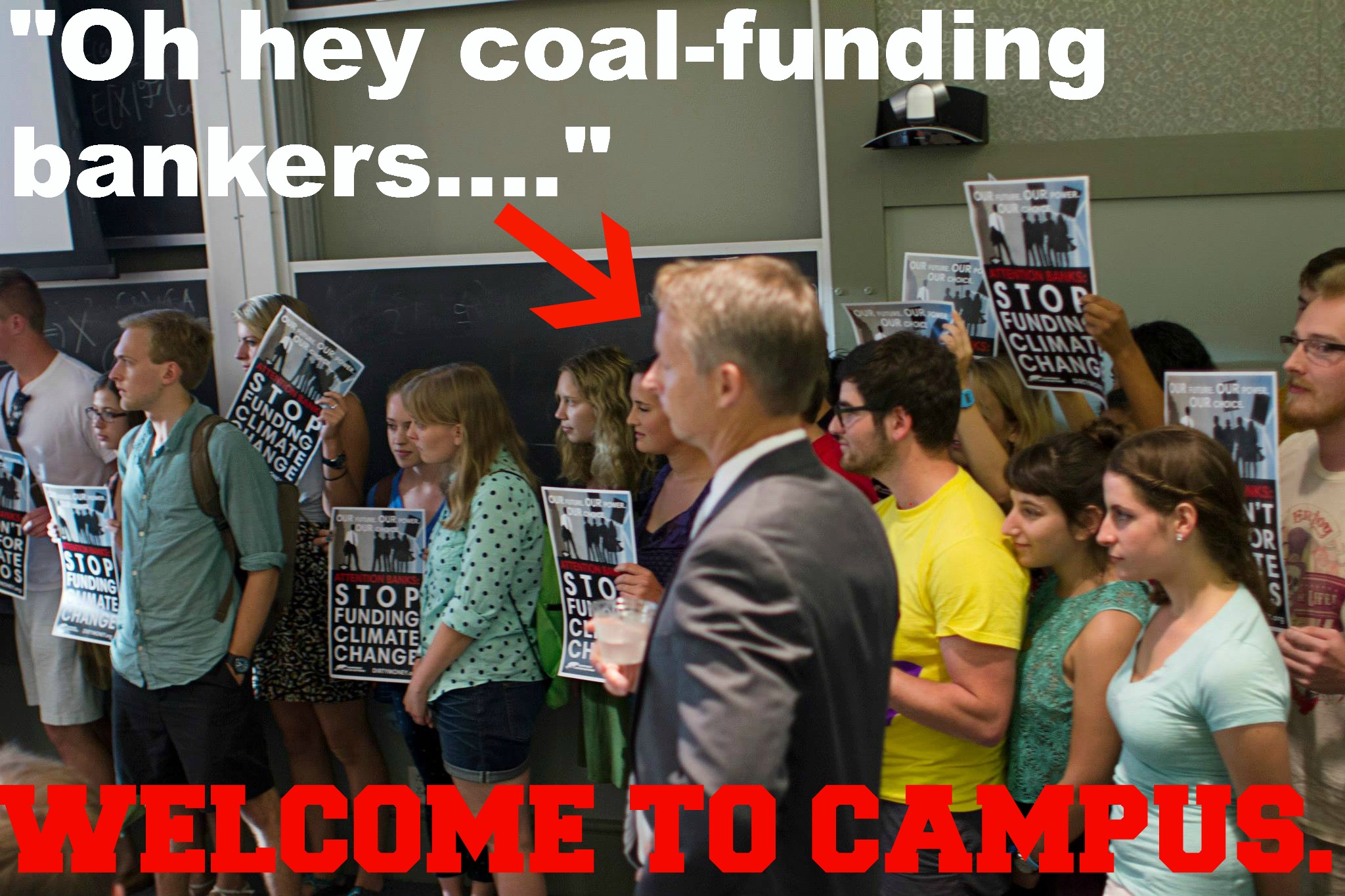Cross-posted from Fossil Free blog. This post was written by Hannah Jones, Swarthmore Mountain Justice alumna.
If you’re reading this, you already know: we’re living in a time of unprecedented climate activism. Yet even as student divestment campaigns command the attention of the president and major newspapers, many campuses are hearing disappointing noises from their campus administrations: “no.” In this moment where some may feel uncertain, I’m more excited than ever to see how the campus divestment movement will build.

I’ve spent the past three years pouring my heart and soul into working on fossil fuel divestment. As a student, I joined fellow students to visit organizers in West Virginia who were fighting mountaintop removal coal mining. When we heard about their struggle, we knew we had to take action, and launched one of the earliest fossil fuel divestment campaigns.
Over two years, our campaign organized street theater, banner drops, petition drives, and negotiated with the Board of Managers. Since graduating in 2012, I have continued to support divestment nationally because I see tremendous potential in this movement. I see its potential to build strong leaders who are in this fight for the long haul, its potential to escalate on our campuses to win on divestment, and its potential to pool our power and make change beyond campus.
Now our movement is developing the power to challenge corporate interests on new fronts. In fact, we are uniquely suited to challenge another pillar of the dirty energy economy: big banks. Students on campuses all over the country are taking action to tell big banks the same thing they are telling their Boards: students will not allow these institutions to bankroll climate destruction.
I’m working with Rainforest Action Network this fall to leverage student power and build pressure on Bank of America and Citibank, the largest funders of the U.S. coal industry. We are demanding that these banks stop funding coal and mountaintop removal, and begin to include reduce the carbon emissions associated with their lending.
Students are uniquely positioned to make banks move. Banks pour huge amounts of resources and energy into cultivating a good image with students. Over the course of their banking life, a single young person can be worth close to $2 million to a bank. Additionally, banks want to recruit the “best and the brightest” to work for them. When it comes down to it, banks can’t work without us, which gives us power.
Students are also using bank-targeted action to strengthen campus divestment campaigns. In confronting banks, students are practicing taking direct action, and sending a message to university Boards that students are capable of mobilizing and taking action. Some students are using these actions to recruit new members through high-impact actions that help new activists feel their power.

By wielding the divestment movement’s power against the worst coal funders in the world, we can build and strengthen our local campaigns while cutting the financial legs out from under the fossil fuel industry. That is why I am asking the divestment movement to join me and call on Bank of America and Citi to stop financing climate chaos.
The divestment movement has accomplished so much in the past year. We have gotten national news coverage, we have gotten the attention of policy-makers and industry executives, we have built up a mass of students who are taking actions on their campuses. As we take action to hold our Boards and banks accountable, we can keep challenging ourselves to think about what else we can do with this power. What other struggles can we ally with? Where else can we make change? Our power is in the possibilities.